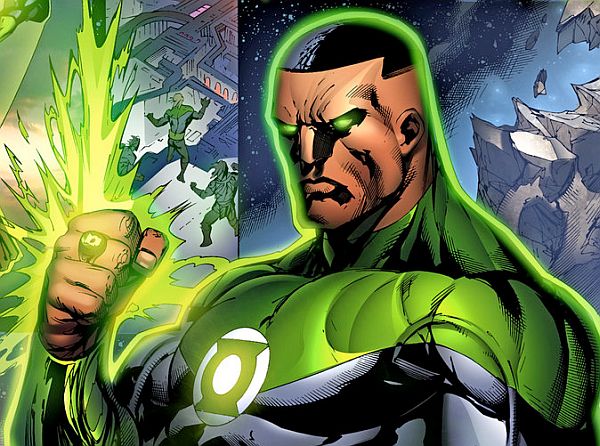
I want to show how we get how we get a threat like the Radiant Dead, how it ties into the Green Lanterns, who's responsible, where it came from, what it could mean for our future. Starting a story in alternate universes is the best because you have all the same pieces on the board as we have in main continuity, and we get to combine them in other cool ways. There's this big epic origin for the Radiant Dead that happened in this other universe.

A lot of the coolest villains, the most terrifying ones, are the big, broad thing that that infects, that corrupts, that absorbs, and assimilates. Phillip Kennedy Johnson: The Bright Revenant was the giant dead baby thing with wings from the Dark Crisis one-shot, and it was leading this thing called the Radiant Dead. What can you tease about them and how they'll figure into things moving forward?

We had a teaser of the Bright Revenant in Dark Crisis: Worlds Without a Justice League - Green Lantern, but they're about to play a much bigger role.

I love that about the DC Universe the interconnectedness. I want to see Hal because when I was growing up, you would see Hal, he would show up in all these different books. I want to see him get into a verbal fight with Oliver. I want to see Hal interact with other superheroes. And hopefully reintegrating Hal into the rest of the DC Universe. And I think because Sector 2814 is quarantined and that he's here. So it's almost like a deployment where they come back, and each time they come back, it's like "What's the world like now?". And very often, there are these big adventures that take him way off Earth for an extended period of time. But Green Lantern is Sector 2814, which is really big. Like, it kind of makes sense for somebody like Hal, I mean, Batman's turf is Gotham, Superman's is Metropolis. Phillip Kennedy Johnson: It's not my story, but I was gonna jump in and say the same thing. But a superhero who's on call for a giant sector of space? I'm hoping to explore that fact. But it's a city that hasn't had that for a while. Coast City is supposed to be Green Lantern. But you know, Gotham's got Batman, Metropolis has got Superman. And because Hal has left so many times, I don't think he's ever really come back and tried to plant roots in the same way that hopefully he does in this story. Jeremy Adams: I mean, talk about a city that's had its ups and downs! (laughs) It's the same way when I go to my hometown. What is it about returning to Coast City or his relationship with the city that seems to be such a frequent part of Hal Jordan-centric stories? I think there's this inflection point for everybody, where it's like "Oh, I have to grow up a little bit." And I think for Hal that can be hard, especially with how impetuous and fearless he can be. And how do you reconcile being out and seeing the wonders of the universe and then coming back home? And why is coming back home more important than maybe what you did out there? And so it's kind of about maturity, because Hal isn't particularly known for his maturity. I started thinking about "What is that future? What is family? What do I really want?" And I think that's something that Hal has to come to terms with. And then at some point, I started thinking about the future. Jeremy Adams: What I can tease is that I think a lot of us, especially me, have this kind of delayed growing up period, where I was just having fun, I was doing my thing, etc.

What can you tease about how Hal Jordan will grow and evolve through this story as Hal makes it back to Earth?


 0 kommentar(er)
0 kommentar(er)
